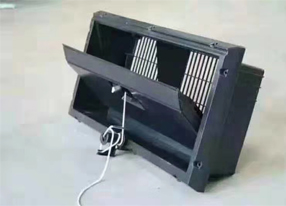Designing Efficient Transport Cages for Broiler Chickens to Ensure Animal Welfare
Dec . 05, 2024 14:53 Back to list
Designing Efficient Transport Cages for Broiler Chickens to Ensure Animal Welfare
The Importance of Broiler Chicken Transport Cages
In the poultry industry, the transport of broiler chickens is a critical aspect that significantly impacts the health and well-being of the birds, as well as the efficiency of the supply chain
. As demand for chicken meat continues to rise globally, understanding the design and functionality of broiler chicken transport cages is essential for producers, transporters, and retailers alike.Broiler chicken transport cages are specifically designed to ensure the safe and humane transportation of chickens from farms to processing facilities. These cages play a crucial role in maintaining the birds' welfare during transit. Given that broiler chickens are bred for rapid growth and high meat yield, they can be sensitive to stressors. Proper transport cages can help mitigate this stress, ensuring that the chickens arrive at their destination in the best possible condition.
One of the key features of effective transport cages is their construction. Ideally, they are made of sturdy materials that can withstand the rigors of transportation, including jostling and sudden movements. Ventilation is another important aspect; well-designed cages allow for adequate airflow, which is essential to keep the birds cool and oxygenated during transport, especially considering that chickens are prone to heat stress.
The size and layout of the transport cages are also vital considerations. Cages must be spacious enough to accommodate the chickens comfortably while adhering to welfare standards. Crowding can lead to injuries, stress, and even mortality during transportation. Consequently, regulations often dictate minimum space requirements per bird to ensure they have enough room to stand, turn, and lie down. Transport cages designed with ease of loading and unloading in mind can also minimize handling stress for the birds, ensuring a smoother transit experience.
broiler chicken transport cages

Moreover, the design of transport cages often factors in the ease of cleaning and biosecurity. Proper hygiene is paramount in poultry transport to prevent the spread of diseases. Cages that can be easily sanitized after each use help maintain biosecurity standards and reduce the risk of contagion among flocks. This aspect is increasingly important in an industry where disease outbreaks can have devastating economic consequences.
In recent years, there has been a growing emphasis on animal welfare regulations affecting the transportation of livestock, including broiler chickens. These regulations advocate for practices that reduce stress and promote the humane treatment of animals during transportation. Stakeholders in the poultry supply chain must be aware of these guidelines and invest in transport cages that comply with welfare standards. This commitment not only aligns with ethical considerations but also enhances the overall reputation of the poultry industry.
Transportation logistics also play a significant role in the well-being of broiler chickens. Factors such as journey length, temperature control, and transportation schedule need to be optimized. The integration of technology, such as real-time monitoring systems for temperature and humidity within transport vehicles, can further enhance the welfare of birds during transit. Companies that prioritize these innovations are likely to find a competitive edge in the market.
Additionally, the sustainability aspect of chicken transport cannot be overlooked. As consumers become increasingly aware of environmental issues, the poultry industry is challenged to adopt more sustainable practices. Efficient transport cages, which maximize space and minimize waste, contribute to a lower carbon footprint. By focusing on sustainability, poultry producers can appeal to a broader audience while also doing their part in combating climate change.
In conclusion, broiler chicken transport cages are not merely containers for transporting birds; they are essential tools that influence animal welfare, biosecurity, and operational efficiency within the poultry supply chain. As the industry continues to evolve, the design and implementation of these cages must also adapt to meet the growing demands for humane treatment and sustainability. By investing in quality transport solutions, stakeholders can ensure the health of broiler chickens and the overall success of their operations.
-
Automatic Feeding Line System-Pan Feeder Nipple Drinker|Anping County Yize Metal Products Co., Ltd.
NewsJul.29,2025
-
Hot Sale 24 & 18 Door Rabbit Cages - Premium Breeding Solutions
NewsJul.25,2025
-
Automatic Feeding Line System Pan Feeder Nipple Drinker - Anping County Yize Metal Products Co., Ltd.
NewsJul.21,2025
-
Automatic Feeding Line System Pan Feeder Nipple Drinker - Anping County Yize Metal Products Co., Ltd.
NewsJul.21,2025
-
Automatic Feeding Line System - Anping Yize | Precision & Nipple
NewsJul.21,2025
-
Automatic Feeding Line System - Anping Yize | Precision & Nipple
NewsJul.21,2025






